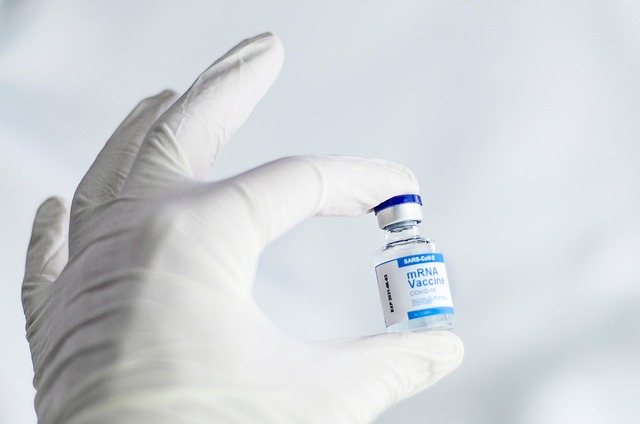In the diverse UK healthcare system, accurate translations of patient medical records (PMRs) are essential for patient safety and effective treatment. Inaccurate translations can lead to misdiagnosis and incorrect treatments due to complex medical terminology, cultural nuances, and regional dialects. Translation services for PMRs in the UK must employ qualified translators knowledgeable in medical jargon, the patient's native language, and culture. Rigorous quality assurance processes, including peer review, double-checking against source records, and compliance with GDPR and HIPAA (if applicable), are crucial to ensure accuracy and clinical safety. Best practices involve using advanced machine translation tools, integrating with electronic health record systems, maintaining data privacy and security through robust security measures and confidentiality agreements, and implementing effective workflows with clear communication channels. Continuous evaluation methods and healthcare expert reviews ensure high standards and adaptability to evolving medical terminology and cultural considerations.
In the diverse healthcare landscape, accurate patient record translations are non-negotiable. This is especially true in the UK, where medical professionals encounter a vast array of languages among their patient populations. This article explores the critical components of ensuring precise translations for patient medical records, addressing challenges specific to the UK context. We delve into best practices, from selecting reputable translation services and implementing robust quality assurance processes to leveraging technology and maintaining stringent data privacy. Discover how these strategies contribute to improved healthcare delivery and enhanced patient outcomes, highlighting the importance of professional translation services in the UK.
- Understanding the Significance of Accurate Translations in Healthcare
- Challenges in Patient Record Translations: A UK Perspective
- Selecting Reliable Translation Services for Medical Records
- Quality Assurance Processes in Medical Translation
- The Role of Native Language Experts and Medical Translators
- Technology's Impact on Enhancing Translation Accuracy
- Maintaining Data Privacy and Security during Translation
- Implementing Effective Workflows for Prompt Delivery
- Continuous Evaluation and Feedback Mechanisms
Understanding the Significance of Accurate Translations in Healthcare

Accurate translations are paramount in healthcare, where clear communication ensures patient safety and effective treatment. When dealing with patient medical records, translation services must be meticulous to avoid potential errors that could impact diagnosis and care plans. In the UK, where a diverse population seeks healthcare services, the need for reliable translation services for patient medical records is evident.
Inaccurate translations may lead to miscommunication between healthcare professionals and patients, resulting in incorrect medications, treatments, or procedures. This is especially critical when dealing with complex medical terminology, cultural nuances, and specific regional dialects. Therefore, healthcare providers should only rely on professional translation services that employ qualified translators familiar with medical jargon and the patient’s native language and culture to ensure precise and culturally sensitive translations of patient records.
Challenges in Patient Record Translations: A UK Perspective

In the UK, ensuring accurate patient record translations presents a multifaceted challenge. The National Health Service (NHS) serves a diverse population with varying ethnic and linguistic backgrounds, necessitating professional translation services for Patient Medical Records UK. One of the primary hurdles is the wide array of languages spoken, from common European languages to less prevalent dialects and minority languages. This diversity demands a correspondingly broad linguistic expertise from translation providers.
Additionally, patient records often contain complex medical terminology and highly specialized language, requiring not just proficiency but also a deep understanding of both source and target healthcare systems. Misinterpretations or mistranslations can lead to misdiagnosis, incorrect treatment plans, and potential harm to patients. Thus, rigorous quality assurance processes are essential, involving native speakers, subject matter experts, and advanced translation tools to guarantee accuracy and clinical safety.
Selecting Reliable Translation Services for Medical Records

When it comes to patient medical records, precision and confidentiality are paramount. Selecting reliable translation services is a critical step in ensuring accurate and secure communication across linguistic barriers. In the UK, where healthcare systems often deal with diverse patient populations, professional translation services specialised in medical terminology are essential. Look for providers that have extensive experience in translating medical documents, certified translators who understand medical jargon, and those compliant with data protection regulations like GDPR.
Reputable translation agencies will employ rigorous quality control measures, including peer review and proofreading, to guarantee the accuracy of translations. They may also offer additional services such as localisation, which adapts content for cultural nuances in specific regions, ensuring that medical information is not only translated but also understood effectively by patients and healthcare professionals alike.
Quality Assurance Processes in Medical Translation

Ensuring accurate patient record translations involves rigorous Quality Assurance (QA) processes tailored to the medical domain. These processes begin with a comprehensive review of translation services for Patient Medical Records UK, where qualified linguists and medical experts meticulously examine each translated document. This initial screening identifies any potential errors or inconsistencies in terminology, syntax, or cultural nuances specific to healthcare contexts.
Subsequent QA steps involve double-checking translations against the source records, cross-referencing specialized medical glossaries, and verifying compliance with regulatory standards like GDPR for data privacy. Automated tools, such as translation memory software, also play a crucial role by maintaining consistency across multiple patient records and ensuring proper handling of technical terminology specific to various medical specialties.
The Role of Native Language Experts and Medical Translators

Technology's Impact on Enhancing Translation Accuracy

In today’s global healthcare landscape, ensuring accurate patient record translations is more critical than ever. Technology plays a pivotal role in enhancing translation accuracy for patient medical records, particularly in the UK where diverse linguistic needs must be met. Advanced machine translation (MT) tools and artificial intelligence (AI) platforms are transforming the way medical records are translated, making processes faster, more efficient, and more reliable.
These technologies employ neural network architectures to understand context and semantic nuances, improving the quality of translations. Additionally, human review and editing processes ensure that MT outputs are medically precise and culturally appropriate. Integration with electronic health record (EHR) systems further streamlines translation workflows, enabling seamless data exchange between healthcare providers and patients from various linguistic backgrounds. This not only improves patient care but also promotes effective communication within the UK’s diverse healthcare system.
Maintaining Data Privacy and Security during Translation

Maintaining data privacy and security is paramount when translating patient medical records, especially in the UK where strict regulations like GDPR govern sensitive healthcare information. When utilizing translation services for Patient Medical Records UK, ensure the provider has robust security measures in place to protect patient data during all stages of translation. This includes encryption of data, secure storage, and adherence to ISO standards for information security management.
Verify that the translator or translation company follows strict confidentiality agreements, conducts background checks on employees, and has mechanisms to prevent unauthorized access or disclosure of medical records. Additionally, they should implement procedures for handling personal health information (PHI) in line with HIPAA (if applicable) or UK data protection laws, ensuring compliance and maintaining patient trust.
Implementing Effective Workflows for Prompt Delivery

Implementing effective workflows is key to ensuring prompt and accurate translations of patient medical records, especially within the UK healthcare system where timely access to information can be critical. Efficient processes start with a well-defined pipeline: receive records, assess complexity, assign translators, edit and proofread, then deliver the final translated documents. Automation tools can streamline this workflow, enabling faster turnarounds without sacrificing quality.
Using specialized translation software equipped with machine translation capabilities can pre-translate texts, reducing the workload on human translators. Subsequently, human experts refine these translations, ensuring medical terminology accuracy and cultural appropriateness. Additionally, establishing clear communication channels between healthcare providers, translators, and editors guarantees that all parties are aligned, leading to faster delivery times for critical patient records without compromising their integrity.
Continuous Evaluation and Feedback Mechanisms

Ensuring accurate patient record translations involves establishing robust evaluation and feedback mechanisms. These processes are integral to maintaining high standards in translation services for Patient Medical Records UK. Regular reviews and feedback from healthcare professionals, patients, and translators themselves help identify areas of improvement and maintain consistency in translations over time.
Feedback mechanisms can include post-translation quality assessments, where experts verify the accuracy and clarity of translated records. Additionally, patient satisfaction surveys and direct communication channels allow individuals to voice any discrepancies or concerns. This continuous evaluation ensures that translation services adapt to evolving medical terminology and cultural nuances, ultimately enhancing the reliability and quality of patient record translations.
Ensuring accurate patient record translations is paramount in modern healthcare, especially with diverse patient populations. By understanding the unique challenges in UK contexts, leveraging reliable translation services, and implementing robust quality assurance processes, healthcare providers can maintain data privacy and security while facilitating prompt delivery. Native language experts and advanced technology play pivotal roles in enhancing accuracy. Continuous evaluation and feedback mechanisms are essential to optimize workflows for translation services for Patient Medical Records UK, ultimately improving patient care and outcomes.



